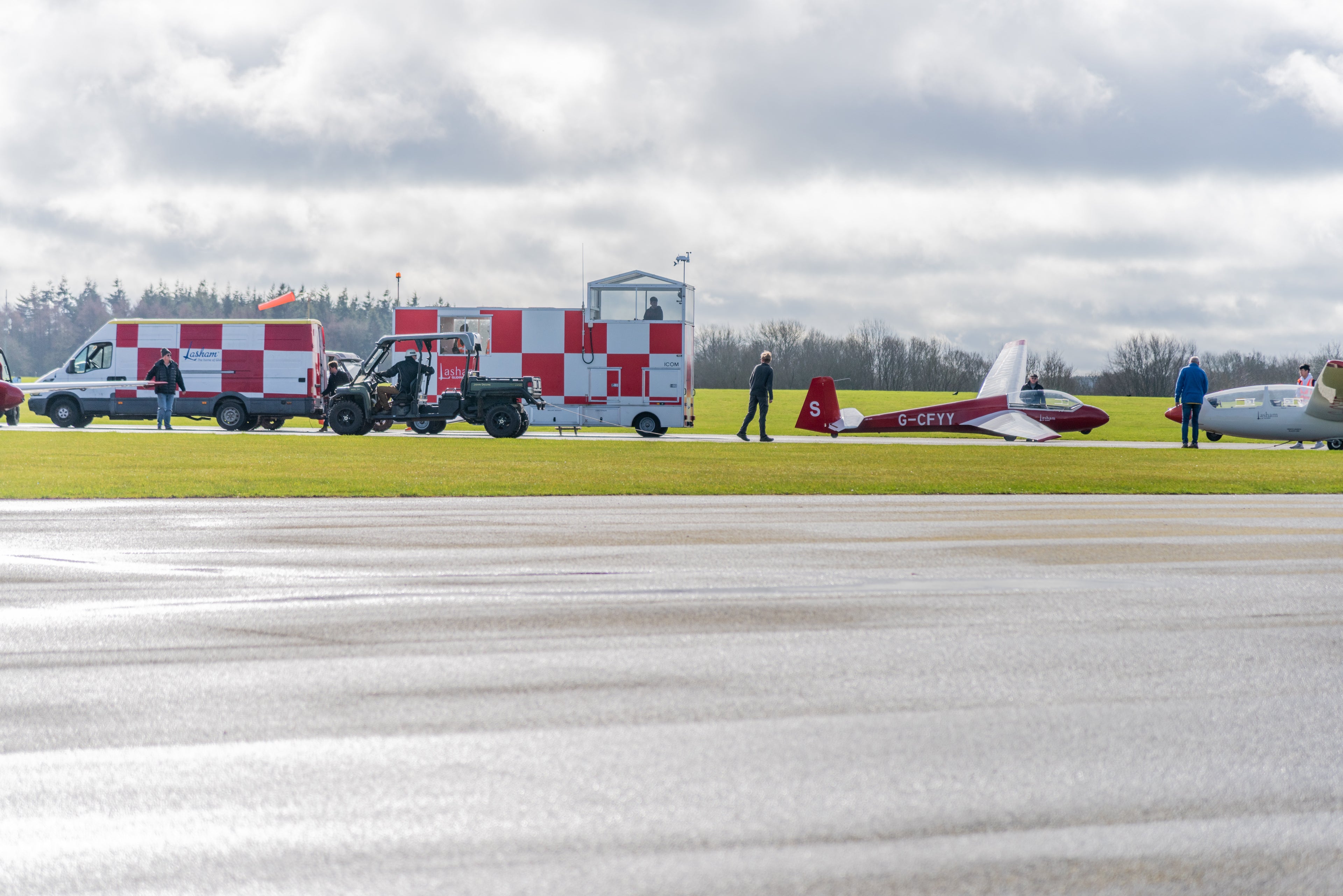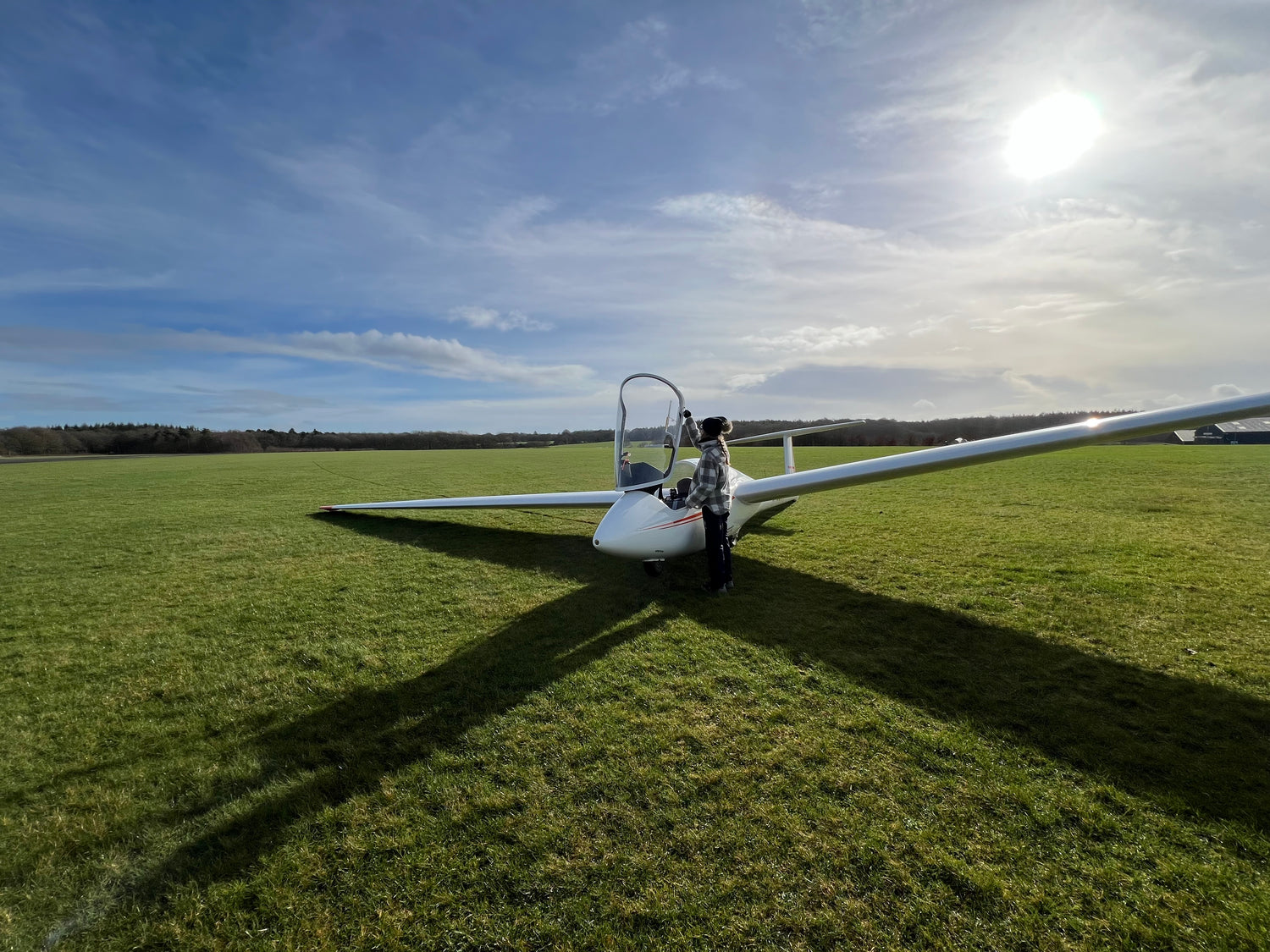
Training programme
Lasham has a comprehensive training programme, designed to take you from your first flight up to licensed standard and beyond. The training can be summarised into a few stages:

Pre-Solo: During your pre-solo training you will learn how to handle the glider, navigate a circuit and deal with emergency situations. Once you are deemed safe to fly on your own, you will be sent solo (provided a few other conditions are met).
Post-Solo: This is where you will become a complete glider pilot. This is split into 2 training cards: White Card and Red Card. During this phase you will learn how to handle all of the different flying conditions you could encounter.
Licence: Once you have reached the required standard, you will complete both a written and practical test and gain your full licence.
Here is more detail on what each stage will entail:
Training programme
Pre-Solo
During this phase you will be trained to fly following the British Gliding Association (BGA) syllabus. The requirements for your first solo flight are:
- A safe standard of flying.
- Completion of required flying exercises, as recorded in your training record.
- A copy of your medical registered with the office. (A driving licence is usually sufficient)
- Completed and passed the Air Law exam.
- Completed the Jet Movement and Local Airspace briefings.
After your first solo you will move onto the White Card.
White Card
During this phase you will continue your training while building up some experience flying solo:
- To fly solo, you will need a daily "check-flight" - at least 1 flight with an instructor on the day to ensure you are flying to a safe standard for the conditions.
- The White Card mostly consists of revision of important pre-solo exercises.
- If not already, you will need to learn and go solo using an aerotow launch. Once completed you will be able to fly the single seaters, Grob G102s.
- Once you have completed all the White Card exercises, there will be a flight test to fully sign off the card. This will usually include an aerotow and 2 winch launches.
Once the White Card is fully signed off, you will be able to fly solo without a daily check-flight. You will now move onto the Red Card.
Red Card
During this phase you will continue your training with more advanced exercises, while flying solo with a reduced level of supervision:
- You can fly solo without a check-flight but still require daily authorisation from the Duty Instructor.
- You will complete the Red Card flying exercises with an instructor.
- You should study for and complete the Bronze theory paper.
- You will aim to do enough solo flying to meet the experience requirements for the BGA Bronze Endorsement.
- Once all the requirements are met, you will complete your Bronze Flying Test. On successful completion of this you will be able to apply for the BGA Bronze endorsement.
On completion of the Red Card, you will have a BGA Bronze and Cross-Country endorsement, and will be considered a licenced pilot. You should apply for your Sailplane Pilots Licence (SPL).
Yellow Card
After you have attained your licence you should move onto the Yellow Card. This will take you from your first solo cross-country flight to being able to take passengers flying (Friends & Family Rating).
Windsocks
Coloured windsocks are flown at the launchpoint to show the severity of the conditions and to show who is allowed to fly, depending on their level of experience. There are 3 colours of windsock:
- White windsock: The conditions are benign and are suitable for inexperienced pilots. Solo pilots who have completed their White Card may fly solo, provided they are authorised by the duty instructor.
- Red windsock: Pilots who have completed their Red Card and hold a BGA Bronze and Cross-Country endorsement are permitted to fly solo. Pilots with only a White Card may not fly solo unless specifically cleared by an instructor. This may require a briefing or a check-flight to prove competence in these conditions.
- Yellow windsock: This is flown when conditions are more severe. When the yellow windsock is flying, only Yellow Card pilots may fly solo unless specifically cleared by an instructor.
During your training it is important that you stick to these rules. As you become more experienced, you will be able to handle more challenging conditions.
Frequently asked questions
What's the difference between a Bronze and a licence?
- We are currently governed by BGA regulations, and it has been this way for many years. A pilot is considered to be "licenced" once they have achieved both their BGA Bronze and Cross-Country endorsements. There is no formal licence under this system.
- In September 2025 we will be moving to Part-SFCL (Sailplane Flight Crew Licencing) regulations. Under this new system, licences will be formalised into a Sailplane Pilots Licence (SPL).
- Pilots who hold a BGA Bronze and Cross-Country endorsement can easily convert this into an SPL by filling out the required paperwork and paying a fee to the BGA. It is recommended that all pilots do this as soon as possible to avoid complications nearer to September 2025.
Am I qualified once I can fly solo?
- No, your first solo flight is an exercise as part of your training. Your instructor has decided you are safe to fly on that occasion in those days' conditions. You are still under direct supervision until you attain your licence.
Is winch launching or aerotowing more difficult?
- Neither winch launching nor aerotowing are more difficult, however due to the higher loads and steep angle of climb, a lot of emphasis is put on practicing winch launch failures and conducting safe winch launching.
- To successfully aerotow the pilot needs to be able to fly the glider fairly accurately in order to fly safely in formation with the tow plane.
What weather conditions are more challenging?
- Generally, a stronger wind will be more challenging, especially if the wind has a significant crosswind component (i.e. the wind is not aligned with the direction of takeoff / landing). The more experience you get, the easier you will find it to manage these conditions.
Fly with us
-
Glider trial lesson
Regular price £140.00Regular priceUnit price / per -
Glider flying start
Regular price £245.00Regular priceUnit price / per -
Learn to glide course
Regular price From £990.00Regular priceUnit price / per



